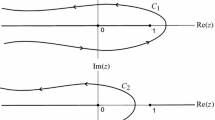Summary
This paper deals with the statistical efficiency of estimation methods for “passage times” in closed, multiclass networks of queues with priorities. Informally, a passage time is the time for a job to traverse a portion of the network. Such quantities are important in computer and communication system models, and in this context, quantities other than mean values are of interest. We consider here the efficiencies of the “marked job method” for passage time simulation (based on the tracking of a distinguished job) and the “decomposition method” in which observed passage times for all of the jobs enter in the construction of point and interval estimates. We show that the decomposition method is superior in that, for simulations of equal length, it produces tighter confidence intervals. We also calculate theoretical values for variance constants entering into central limit theorems used to obtain confidence intervals for mean passage times. These results provide a means of quantifying the relative efficiency of the decomposition method.
Similar content being viewed by others
References
Cox, D.R.: A use of complex probabilities in the theory of queues. Proc. Cambridge Philos. Soc. 51, 313–319 (1955)
Crane, M.A., Iglehart, D.L.: Simulating stable stochastic systems: III, Regenerative processes and discrete event simulation. Operations Res. 23, 33–45 (1975)
Crane, M.A., Lemoine, A.J.: An introduction to the regenerative method for simulation analysis. Lecture Notes in Control and Information Sciences, Vol. 4. Berlin, Heidelberg, New York: Springer 1977
Gelenbe, E., Muntz, R.R.: Probabilistic models of computer systems — Part I (Exact results). Acta Informat. 7, 35–60 (1976)
Hordijk, A., Iglehart, D.L., Schassberger, R.: Discrete time methods for simulation of continuous time Markov chains. Adv. in Appl. Probability 8, 772–788 (1976)
Iglehart, D.L., Shedler, G.S.: Regenerative simulation of response times in networks of queues. J. Assoc. Comput. Mach. 25, 449–461 (1978)
Iglehart, D.L., Shedler, G.S.: Regenerative simulation of response times in networks of queues with multiple job types. Acta Informat. 12, 159–175 (1979)
Iglehart, D.L., Shedler, G.S.: Regenerative simulation of response times in networks of queues. Lecture Notes in Control and Information Sciences, Vol. 26. Berlin, Heidelberg, New York: Springer 1980
Miller, D.R.: Existence of limits in regenerative processes. Ann. Math. Statist. 43, 1275–1282 (1972)
Author information
Authors and Affiliations
Rights and permissions
About this article
Cite this article
Iglehart, D.L., Shedler, G.S. Regenerative simulation of response times in networks of queues: statistical efficiency. Acta Informatica 15, 347–363 (1981). https://doi.org/10.1007/BF00264534
Received:
Issue Date:
DOI: https://doi.org/10.1007/BF00264534




